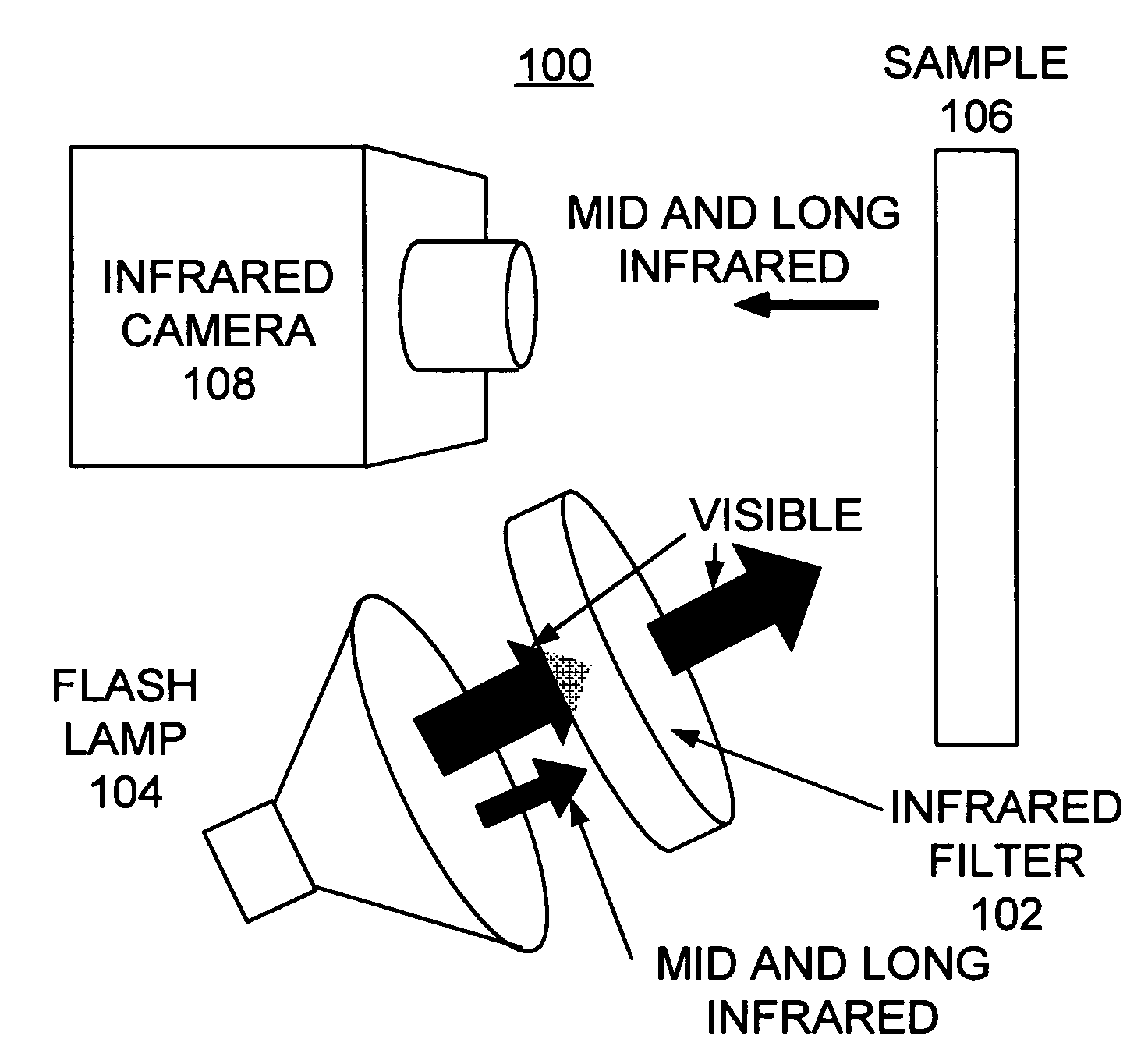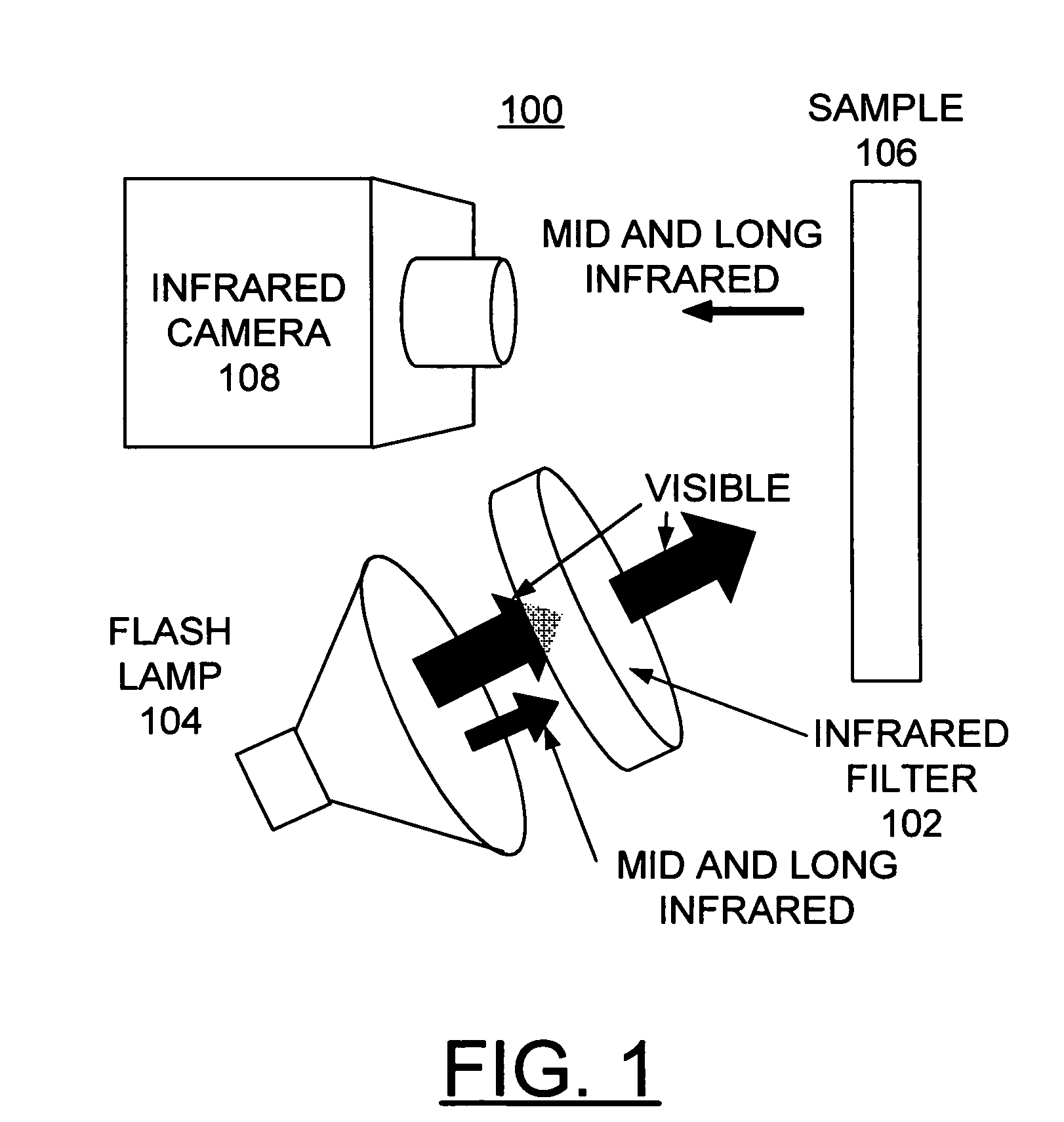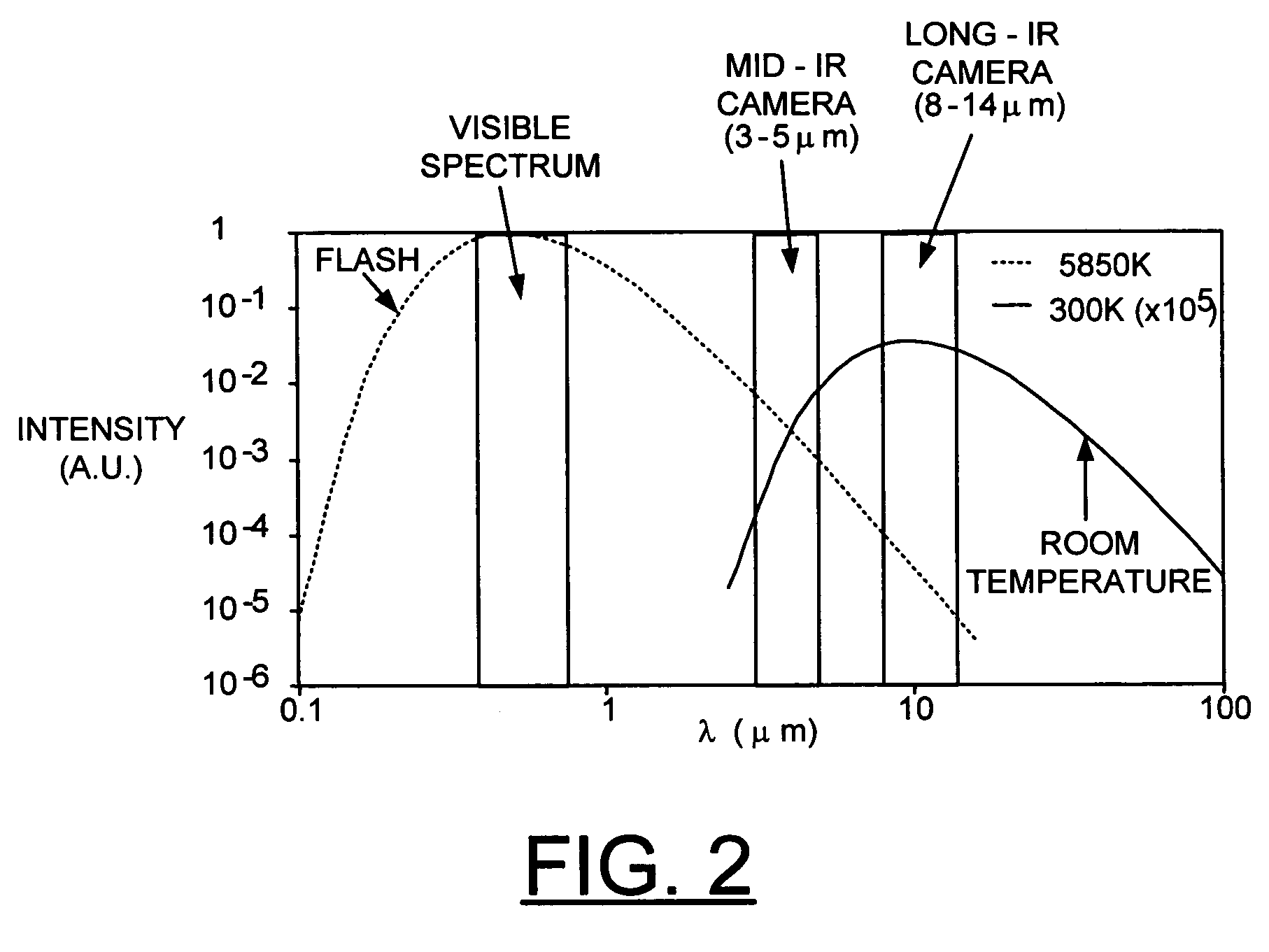Optical filter for flash lamps in pulsed thermal imaging
a technology of optical filter and flash lamp, which is applied in the field of optical filter for flash lamp, can solve the problems of inability to use pulsed thermal imaging, inability to reliably test materials, and major hardware problems of infrared radiation from flash lamps, so as to reduce infrared radiation and reduce flash energy in visible wavelengths
- Summary
- Abstract
- Description
- Claims
- Application Information
AI Technical Summary
Benefits of technology
Problems solved by technology
Method used
Image
Examples
Embodiment Construction
[0028]Having reference now to the drawings, FIG. 1 illustrates a pulsed thermal imaging apparatus generally designated by the reference numeral 100 including an invented infrared filter 102 in accordance with the preferred embodiment. Thermal imaging system 100 includes a flash lamp 104 providing a pulse of thermal energy for heating a first surface of the sample 106. Thermal imaging system 100 includes, for example, a high-resolution and high-sensitivity infrared camera 108, for example, with 256×256 pixel focal plane array of infrared sensors. Infrared camera 108 is positioned on the same side of the sample 102 as the flash lamps 104.
[0029]In accordance with features of the invention, the infrared filter 102 in accordance with the preferred embodiment substantially eliminates mid and long infrared radiation from the flash lamp 104 so that substantially only a visible light pulse is applied to the sample 106.
[0030]Emission of thermal radiation in pulsed thermal imaging can be estim...
PUM
| Property | Measurement | Unit |
|---|---|---|
| thick | aaaaa | aaaaa |
| wavelengths | aaaaa | aaaaa |
| wavelengths | aaaaa | aaaaa |
Abstract
Description
Claims
Application Information
 Login to View More
Login to View More - R&D
- Intellectual Property
- Life Sciences
- Materials
- Tech Scout
- Unparalleled Data Quality
- Higher Quality Content
- 60% Fewer Hallucinations
Browse by: Latest US Patents, China's latest patents, Technical Efficacy Thesaurus, Application Domain, Technology Topic, Popular Technical Reports.
© 2025 PatSnap. All rights reserved.Legal|Privacy policy|Modern Slavery Act Transparency Statement|Sitemap|About US| Contact US: help@patsnap.com



